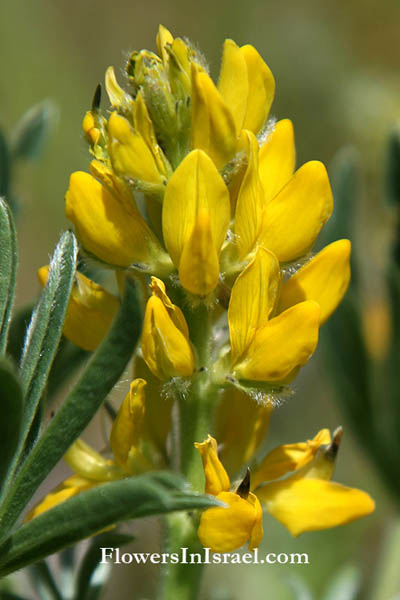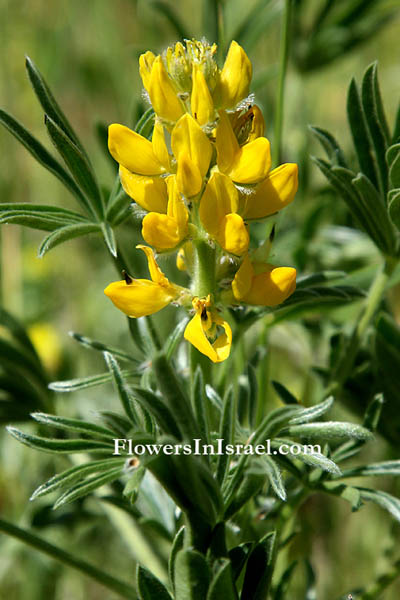Hebrew: תורמוס צהוב, Arabic: الترمس الأصفر
| Scientific name: | Lupinus luteus L. | |
| Common name: | Yellow Lupine | |
| Hebrew name: | תורמוס צהוב | |
| Arabic name: | الترمس الأصفر | |
| Plant Family: | Papilionaceae, פרפרניים |

|
| Life form: | Annual | |
| Stems: | 25-80 cm high; hairy | |
| Leaves: | Alternate, compound, digitate (shaped like a spread hand); leaflets obovate-oblong, mucronate, sparsely appressed-villous above | |
| Inflorescence: | Raceme 5-16 cm; flowers regurlarly verticillate | |
| Flowers: | Yellow; corolla yellow; peduncle 4-12 cm | |
| Fruits / pods: | Legume, densely villous; seeds 4-6 | |
| Flowering Period: | March, April, May | |
| Habitat: | Sand | |
| Distribution: | Mediterranean Woodlands and Shrublands, Deserts and extreme deserts | |
| Chorotype: | Mediterranean | |
| Summer shedding: | Ephemeral |

Derivation of the botanical name: Lupinus, Latin lupus, "wolf," alluding to the belief that these plants destroyed the fertility of the soil, which is the oppposite of the truth; the seeds are eaten in eastern Mediterranean countries. luteus, dfeep-yellow, golden-yellow, buttercuo-yellow. The Hebrew name: תורמוס, turmos, from Greek: thermos (= Lupinus albus), which is probably identical with thermos (= warm, hot), which is related to therme (=heat).

|